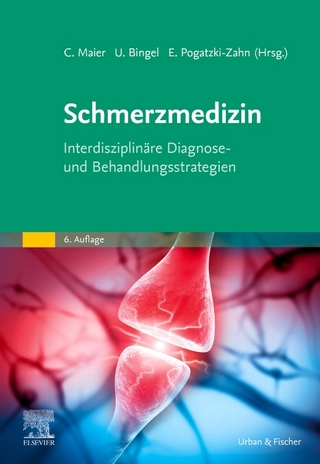
Sports Neurology
Elsevier Science Ltd (Verlag)
978-0-444-63954-7 (ISBN)
Brian Hainline, MD is the first chief medical officer of the NCAA and oversees their Sport Science Institute. For more than 30 years, Dr. Hainline has been actively involved in sports medicine. He has served on the New York State Athletic Commission, the United States Olympic Committee’s Sports Medicine Committee and was a founding member of the Executive Committee of the American Academy of Neurology Sports Neurology Section, where he serves as chair. He has been instrumental in the development of health and safety standards in tennis, both nationally and internationally. He was chief medical officer of the U.S. Open Tennis Championships for 16 years, and then served as the first chief medical officer of the United States Tennis Association before moving to the NCAA. Dr. Robert Stern is Professor of Neurology, Neurosurgery, and Anatomy & Neurobiology at Boston University School of Medicine, where he is also Director of the Clinical Core of the BU Alzheimer’s Disease Center, and Director of Clinical Research for the BU CTE Center. A major focus of his research involves the long-term effects of repetitive head impacts in athletes, including the neurodegenerative disease, chronic traumatic encephalopathy (CTE). He is the lead co-principal investigator of the DIAGNOSE CTE Research Project, a 7-year NIH-funded multi-center, longitudinal study to develop methods of diagnosing CTE during life as well as examining potential risk factors of the disease. Dr. Stern’s other major area of funded research includes the diagnosis and treatment of Alzheimer’s disease. He has also published on various aspects of cognitive assessment and is the senior author of many widely used neuropsychological tests. He has received numerous NIH and other national grants and he is a Fellow of both the American Neuropsychiatric Association and the National Academy of Neuropsychology.
SECTION I. Introduction 1. Sports and the human brain: an evolutionary perspective 2. Sports neurology as a multidisciplinary field
SECTION II. Traumatic brain injury and concussion 3. Mild traumatic brain injury and concussion: terminology and classification 4. Catastrophic neurologic injuries in sport 5. Concussive and subconcussive brain trauma: the complexity of impact biomechanics and injury risk in contact sport 6. Concussion: pathophysiology and clinical translation 7. Epidemiology of sports concussion in the United States 8. Sideline assessment of concussion 9. Emergency department evaluation of the concussed athlete 10. Office-based concussion evaluation, diagnosis, and management: adult 11. Office-based concussion evaluation, diagnosis, and management: pediatric 12. The relationship of migraine and other headache disorders to concussion 13. Sleep disorders and concussion 14. Vestibular dysfunction and concussion 15. Neuro-ophthalmologic disorders following concussion 16. Neuropsychiatry of sport-related concussion 17. Postconcussion syndrome 18. The role of neuropsychologists in concussion evaluation and management 19. Return to play following sports-related concussion 20. Return to learn 21. Neuroimaging of brain trauma in sports 22. Blood and cerebrospinal fluid biomarkers 23. Measuring head impacts: accelerometers and other sensors 24. Subconcussive trauma 25. The evolving landscape of policies, rules, and law in sport-related concussion 26. The modern landscape of sport-related concussion research: key achievements and future directions
SECTION III. Neurodegeneration and other long-term consequences of concussion and repetitive head impacts 27. Chronic traumatic encephalopathy: clinical presentation and in vivo diagnosis 28. The neuropathology of chronic traumatic encephalopathy 29. Chronic traumatic encephalopathy: neuroimaging biomarkers 30. Chronic traumatic encephalopathy: fluid biomarkers
SECTION IV. Cervical spinal cord injuries 31. Biomechanics and common mechanisms of injury of the cervical spine 32. Cervical spine trauma evaluation 33. Acute management of cervical spine trauma 34. Cervical spine trauma: prevention strategies 35. Classification in para sport for athletes following cervical spine trauma
SECTION V. Peripheral nerve injuries 36. Peripheral nerve injury in sport: an overview 37. Neuromuscular adaptations in shoulder function and dysfunction 38. Common peripheral nerve injuries in sport: diagnosis and management
SECTION VI. Pain 39. Sport-related injury and pain classification 40. Pain management in sport: therapeutic injections
SECTION VII. Special neurologic considerations in sport 41. Athletes with neurologic disease 42. Neurologic benefits of sports and exercise 43. Future directions
| Erscheinungsdatum | 28.12.2018 |
|---|---|
| Reihe/Serie | Handbook of Clinical Neurology |
| Verlagsort | Oxford |
| Sprache | englisch |
| Maße | 215 x 275 mm |
| Gewicht | 1360 g |
| Themenwelt | Medizin / Pharmazie ► Medizinische Fachgebiete ► Neurologie |
| Naturwissenschaften ► Biologie ► Humanbiologie | |
| Naturwissenschaften ► Biologie ► Zoologie | |
| ISBN-10 | 0-444-63954-3 / 0444639543 |
| ISBN-13 | 978-0-444-63954-7 / 9780444639547 |
| Zustand | Neuware |
| Haben Sie eine Frage zum Produkt? |
aus dem Bereich


